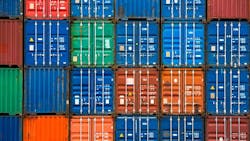Wholesale tire distributors are finding ways to lessen the impact of tariffs that have been levied on countries that supply the products they sell. In this MTD exclusive, four distributors discuss how they reacted when tariffs were initially announced and the measures they’ve since taken to insulate their businesses from any potential fall-out.
‘Seasonality and timing’
“The biggest factor for us was the seasonality and timing of these tariffs,” says JP Gallagher, owner of Gallagher Tire, a wholesale distributor based in Pottstown, Pa. “We do lots of our ordering in Q4 and early-Q1 to make sure we have inventory for the seasonal uptick” in tire demand.
Gallagher Tire “didn't have to react quickly to secure extra product” after the first round of tariffs were announced in April, he notes.
“Our purchases remained fairly steady. Our core suppliers were working with us on a weekly basis to make sure we knew what was going on. We took some opportunities to stock up if they were presented to us. But right now, we’re sitting at a comfortable level to bring us through” the rest of 2025.
Gallagher Tire, however, experienced price increases that suppliers implemented. “We’ve seen (hikes of) anywhere from 5% to 10%, depending on the brand and the country of origin. We kind of cost-averaged a lot of it to remain competitive.
“As inventory has made its way through our system, the price increases are in full effect. We’ve tried to work with our customers to make sure they understand that we held off” on raising prices “as long as we could.
“For the most part, I think everybody understands. It’s hard to not watch the news and not know what’s going on. Our core customers have been receptive to modest increases,” which, he says, have been in line with what he expected.
“Moving forward, the big unknown is India.” (The Trump administration has imposed 50% tariffs on India.) Gallagher Tire carries a large number of tires that are built in India. “We’re keeping our eye on the situation.”
Specialty tires, including products for ag, construction and trailer applications, are the bread and butter for Gallagher Tire. The company has two warehouses: a main one in Pottstown, Pa., where the dealership is headquartered, and a satellite location in the Syracuse, N.Y., area. “We do nothing in consumer (tires). Our truck business is really more of an add-on for some key customers.”
Gallagher says his company’s inventory “is in a pretty good spot.” His team remains in regular contact with suppliers. “Once or twice a month, we're talking with either our sales rep or the national sales manager, depending on the partner. They’re being as forthcoming as they can to let us know what they’re doing to help ease the pain.
“With certain domestic suppliers, we’ve made sure that their supply is going to be available to us. Then as far as our overseas partners, our typical downturn in ordering is August and September and then we will ramp up in Q4, if the situation looks favorable. I’m confident in the key suppliers that we work with.”
He also is confident that Gallagher Tire will survive whatever comes next. “We’ve seen a lot of volatility over the last six months. But how many years have we said, ‘We’ll never see another year like this?’”
‘Continue to buy tires’
Joaquin Gonzalez, president of Miami, Fla.-based Tire Group International LLC (TGI), which imports numerous brands - including some of its own, proprietary brands - says his company has “already churned through our (tariff) strategy. We’ve been importing tires for a very long time and we’ve become subject matter experts when it comes to tariffs and anti-dumping duties — probably since the Obama administration.
“We’ve never really been without any sort of anti-dumping or special levy placed on tires in different segments. With that said, we took a measured approach” when the Trump tariffs were announced, “and what I mean by that is we don’t speculate in the tire business. We're here today, tomorrow and the day after.
“The one thing we’ve learned through all of the times in history where the economy has taken a bump — the one thing that helps us navigate through this — is to continue to buy tires,” says Gonzalez.
“The worst thing that can happen is you get that fear and that shock and you say, ‘I’m just going to hold off on ordering.’ Well, the reality is if you’re truly in the business and you're without tires, your customers are going to have to go to your competitors. You're pretty much inviting your competitor to earn that business.
“When tariffs happen, people say, ‘What are we going to do now?’ We continue to buy because eventually we’ll cost-average ourselves up with the new cost. Others may have a different approach and may eventually run out of tires. So that's always helped us. Over the past several months, our approach has been proven (successful) because we’ve had some really good months out of our distribution centers.”
‘You have to ask for deals’
Bill Watkins, president and owner of Moore’s Tire Sales, which is based in Owego, N.Y., has 12 distribution centers, plus three retail stores. He was recently hit with a tariff-related surcharge when he bought a shipment of tire studs.
“Studs are still needed” in markets like Buffalo, Rochester and Syracuse, where Watkins has warehouses. “Usually, I buy somewhere around two million studs a year. This year, I didn’t buy that many because we had some left over. I bought about 80,000 this year. I buy them out of Canada.
“This year, I had an added expense of over $4,000. I called my (tire stud) supplier and he said, ‘Well, you have a freight charge, you have the cost of the studs and now you have a custom tariff.’ That hit me hard. So what we have to do is just pass that on.”
He’s seen price hikes on the tire side, too. “It depends where (the tires) are coming from. We try to keep a tier-one, tier-two, tier-three and we dabble in tier-four. A lot of our tires are from Indonesia, Thailand, South Korea, Vietnam and Cambodia. Companies are watching their costs more closely.”
Watkins says he’s been forced to pass some tire costs onto his retail customers, adding that the price of “everything else is going up, too. Fuel, insurance, my payroll — all of that goes up, so I can’t afford not to pass it on. And most of the level-headed customers we have understand why we’re doing it. Their prices are going up, too.”
Inventory has not been an issue at Moore’s Tire Sales, according to Watkins. When tariffs were first announced in April, “we reacted very quickly to make sure our locations and our warehouses were full and at the best prices we could be at that time.
“I have 12 warehouses and we loaded them right up. You have to ask for deals. That's kind of how we’re playing it still. If we need extra tires or we think we can make a deal, (suppliers) will deal. If they have it, they’ll make some concessions.
His retail customers also are ordering more units, including winter tires, “earlier and are putting them in stock before any more (tariffs) hit. That’s been a plus for me. Everybody’s buying before the next” round of tariffs.
National rebates have helped with sell-through, he says. Manufacturers, especially at higher tiers, “all seem to come out for a month or two with ‘Buy four tires, get an extra $80 or $100 dollars.’ My people take that straight to our customers. Even if tires cost a little bit more, the end user is getting some extra (money) from the manufacturer. We supply the paperwork so my sub-dealers don’t have to do anything other than hand them to the end user.
“This year, we’ve done really well. We've had increases in seven out of eight months” and “the other (month), I’d say, was flat.” (Editor’s note: MTD spoke with Watkins in mid-September.)
‘The market will adjust’
Haris Nadeem, CEO of USA Wheel and Tire, which is based in Dallas, Texas, and has distribution centers in both Texas and Georgia, says his company was “already prepared” for tariffs, even before the first round of reciprocal duties was announced in April.
“As soon as Trump became president, we saw the writing on the wall,” he says. “We weren’t surprised when the announcement came.”
USA Wheel and Tire began stocking up on units — doubling its orders, in some cases. “We didn't slow down. Our strategy was, ‘Let's buy as much as we can right now.’”
Nadeem reports that some of his suppliers have raised prices in reaction to tariffs. “Some vendors have increased by 5%. I’ve seen as high as 12%. That’s a lot. In the beginning we weren't” passing costs along to retail customers “because it’s a very competitive market in Texas. There are a lot of deals going on.”
Since then, USA Wheel and Tire has been forced to transfer some costs to its clients. “Customers have been adjusting. Obviously, in wholesale, the margins are not crazy. Twelve percent is a big deal.”
Nadeem says his company has already enacted most of its price adjustments. “I think the market will always adjust and customers will adjust,” adding that consumers, in general, are growing accustomed to higher costs. “And that’s not just (the cost of) tires. That’s almost everything.”
USA Wheel and Tire has seen many tariffs come and go since the distributor was founded by Nadeem’s father two decades ago.
Nadeem points to COVID-19 as another situation that the company survived, noting that a couple of months after the pandemic began, “the market just exploded. We saw record sales. I think the market will always adjust. The best part of being independent is you can always lean off a little bit (and) control expenses. You are your own boss.
“It just comes down to knowing your market. The beautiful part of it is when you’ve built a certain level of loyalty with your customers, you can depend on them. Business will always go up and down. My advice is to persevere.”
About the Author
Mike Manges
Editor
Mike Manges is Modern Tire Dealer’s editor. A 28-year tire industry veteran, he is a three-time International Automotive Media Association Award winner, holds a Gold Award from the Association of Automotive Publication Editors and was named a finalist for the prestigious Jesse H. Neal Award, the Pulitzer Prize of business-to-business media, in 2024. He also was named Endeavor Business Media's Editor of the Year in 2024. Mike has traveled the world in pursuit of stories that will help independent tire dealers move their businesses forward. Before rejoining MTD in 2019, he held corporate communications positions at two Fortune 500 companies and served as MTD’s senior editor from 2000 to 2010.

